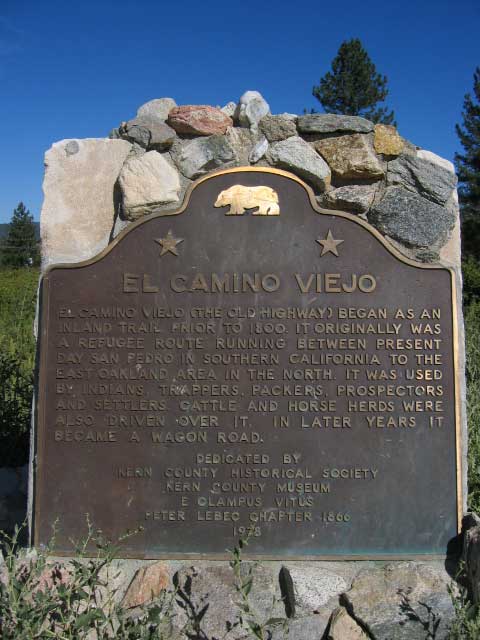
EL CAMINO VIEJO (The Old Highway)
23 October 2004

This monument used to be located at the tree-way intersection the locals call the "Y". In 2004, this monument was moved to the Ridge Route Communities Museum & Historical Society in Frazier Park (3315 Park Drive, just to the east of the post office).
The plague reads: "El Camino Viejo (The Old Highway) began as an inland trail prior to 1800. It originally was a refugee route running between present day San Pedro in southern California to the east Oakland area in the north. It was used by Indians, trappers, packers, prospectors, and settlers. Cattle and horse herds were also driven over it. In later years it became a wagon road."
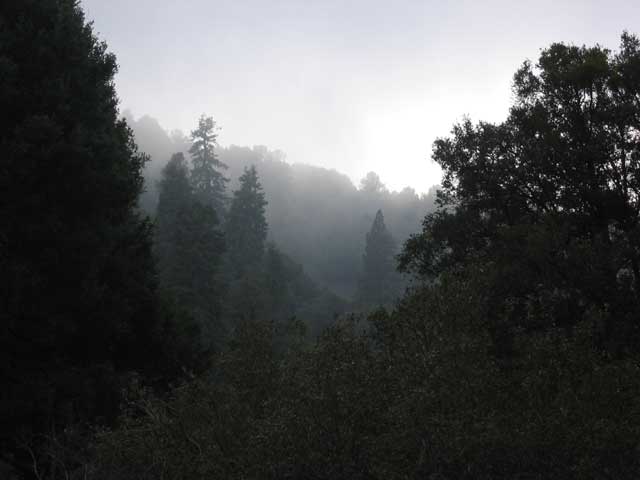
Starting from the old girl scout camp at the bottom of the "Y", the first part of the old road can be especially beautiful on days like this with low cloud cover.
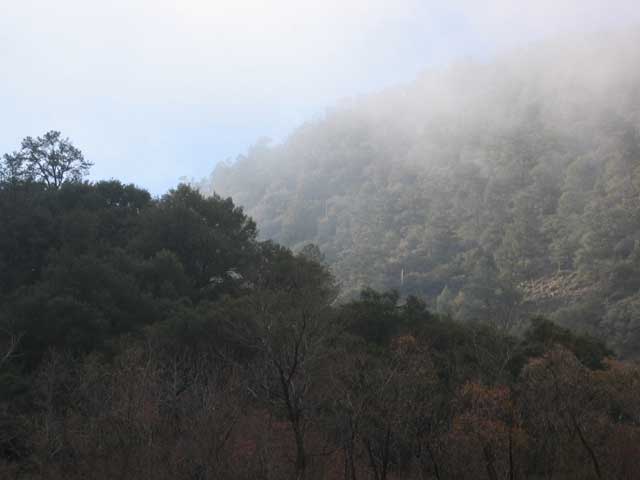
The valley running to the left is where the Whitener tree is standing majestically near Mil Potrero road.
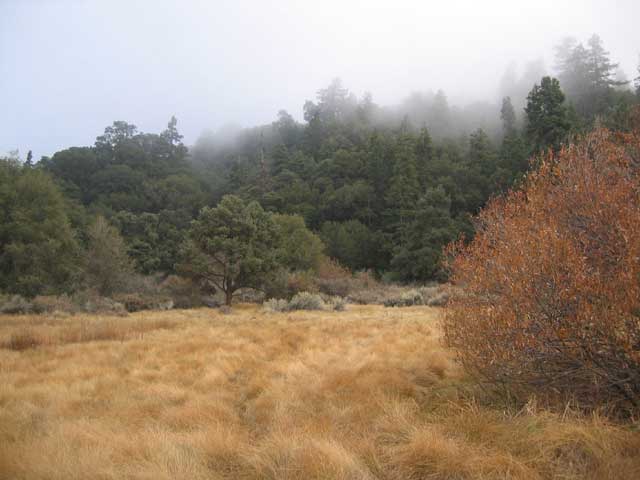
A grassy meadow with considerable evidence of bear activity.
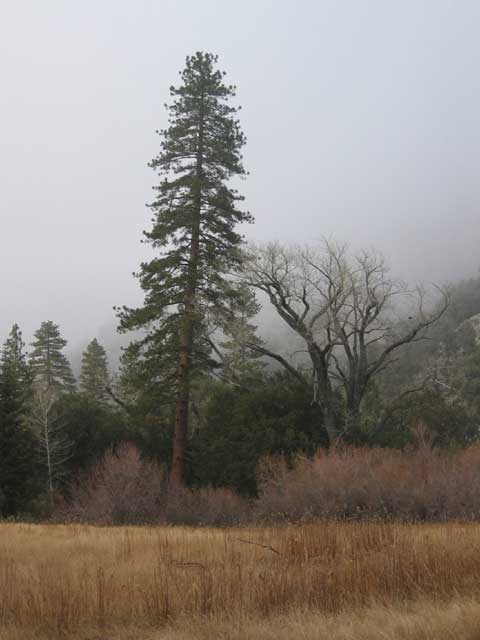
There are some particularly tall trees growing in this (presumably well-watered) area.
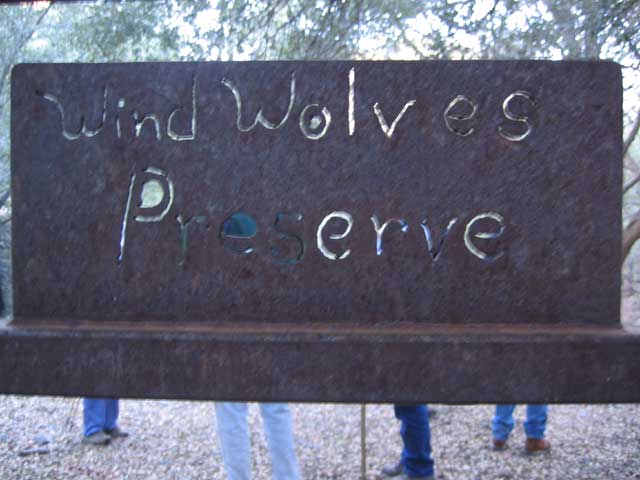
The term "Wind Wolves" comes from Native American culture. It is a descriptive term for the effect of the wind blowing waves through grasslands that resembles the spirit of wolves running unseen through long grass.
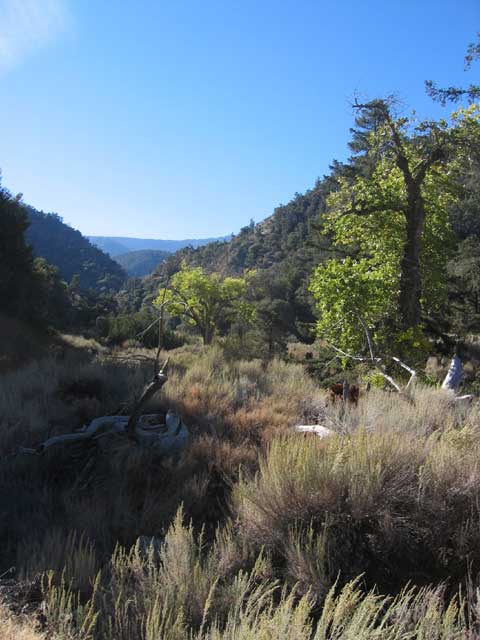
There is little to no trace of the original ancient roadway that passed through here.
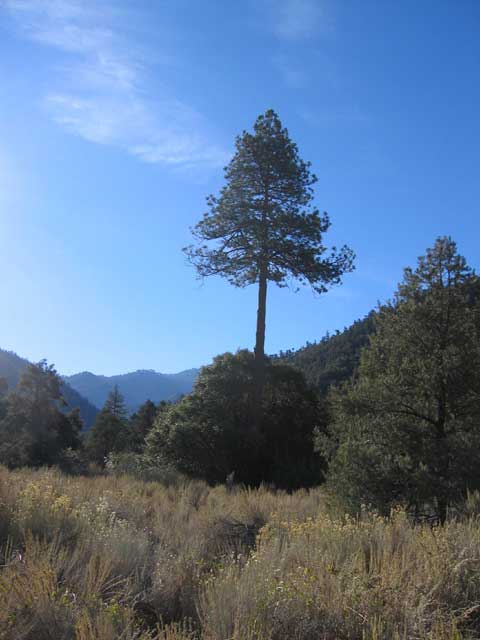
This 'message tree' has several large notches cut into its trunk like letter boxes. The idea was that people could leave messages here for fellow travelers passing by later. To distinguish it from other trees, it has all of its lower branches removed to make it stand out as you approach it.
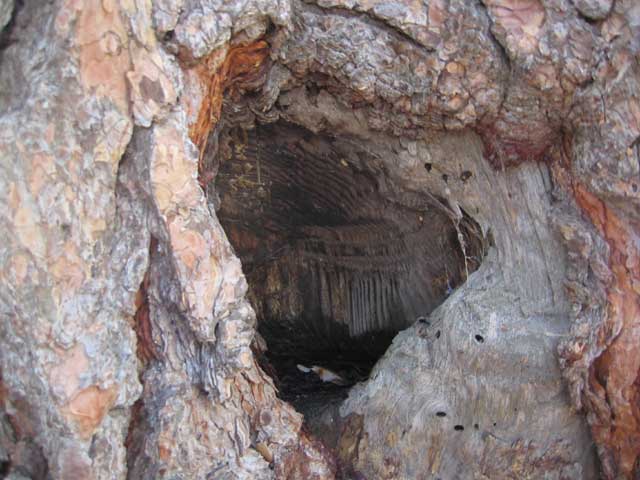
Here is a close up of one of the messages boxes cut into the trunk of the tree.
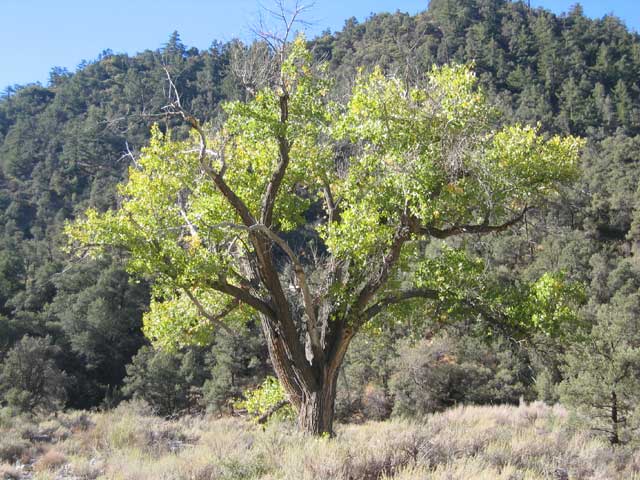
A beautiful tree.
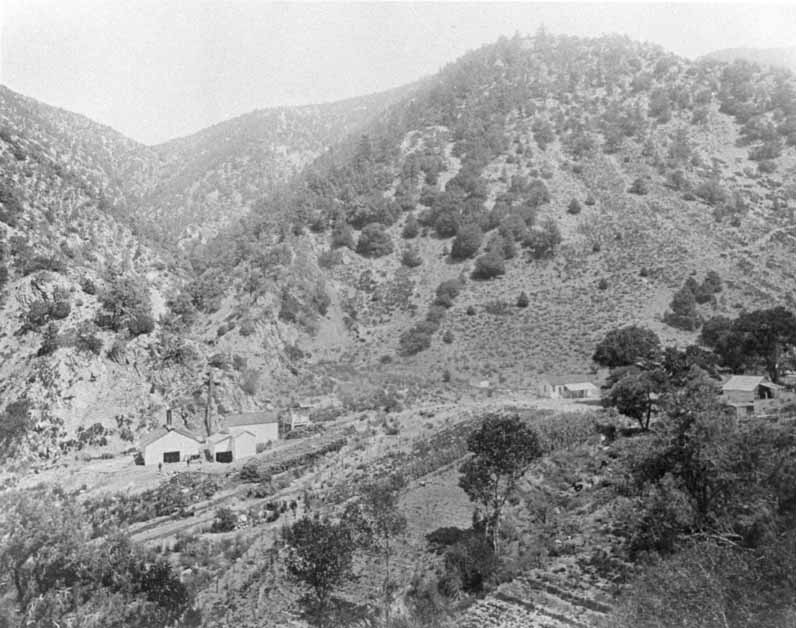
A glimpse of history ...... a photo of a mining complex in the San Emigdio Canyon taken in the late 1800's.
The following mining leases were granted in this area in 1872:
Lot 37: Templito Quartz Mine
Lot 38: Clara Louisa Quartz Mine
Lot 39: Summit Quartz Mine
Lot 40: Whale Quartz Mine
Lot 41A: Padre Juan Quartz Mine
Lot 41B: Whale and Padre Juan Mill Site.
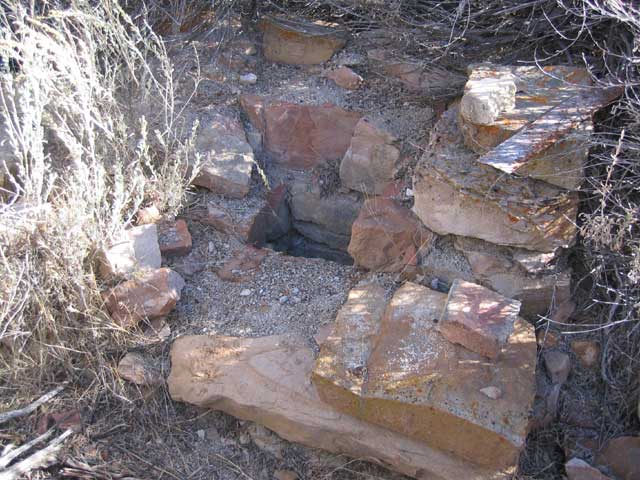
The mining establishment was a very elaborate set up in its day, but there is virtually nothing left of it now apart from the old smelting ovens left hidden among the bushes.
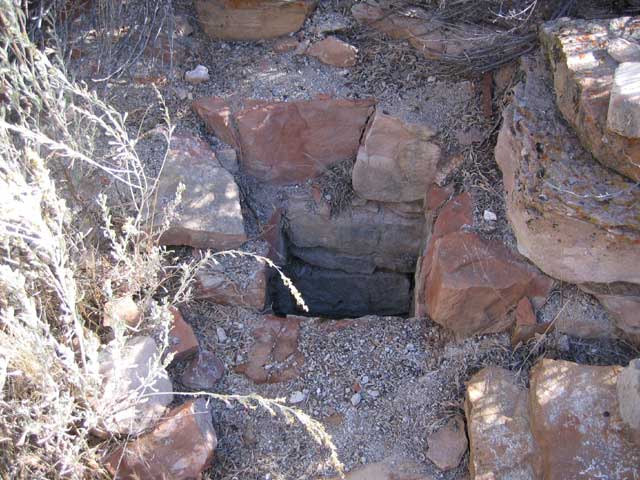
A closer view of the smelting ovens. Antimony is used as a hardening agent in Pewter. It is also an ingredient in the alloy, Babbet, used in making slow-speed bearings and casings in that era. It was also used to make the setable type face used in printing presses of the day.
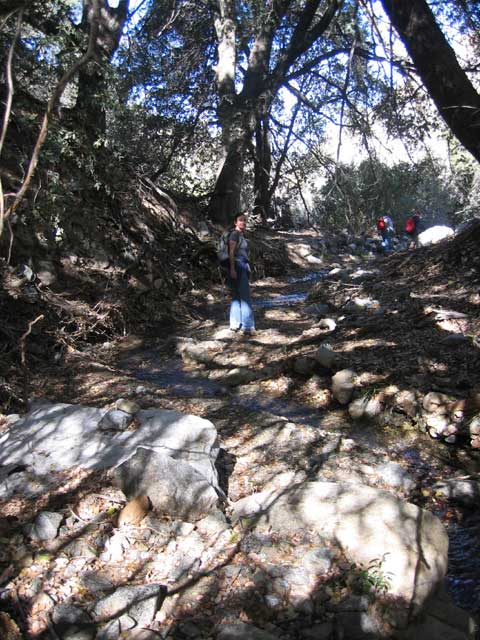
Following a dry creek bed under shady oaks.

The route of the ancient road.
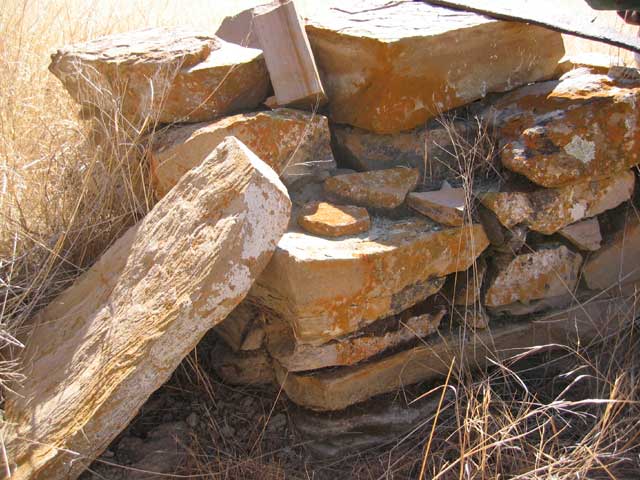
Curtis Newman, the curator of the local museum in Frazier Park, had some old photos of a homestead that he wanted to try and locate the ruins of, known as the 'Douglas House'. He had old black and white photos taken at two angles clearly showing the outline of mountains in the background. Also co-ordinates and a portable GPS unit. We found it using the photos mainly, and later confirmed it with the GPS (as we weren't sure of either the co-ordinates or the accuracy of the GPS hand-held unit). The main thing left of the house was the base of the chimney as seen here, and some non-native trees planted near the homestead that can be seen in the background of the next photo.
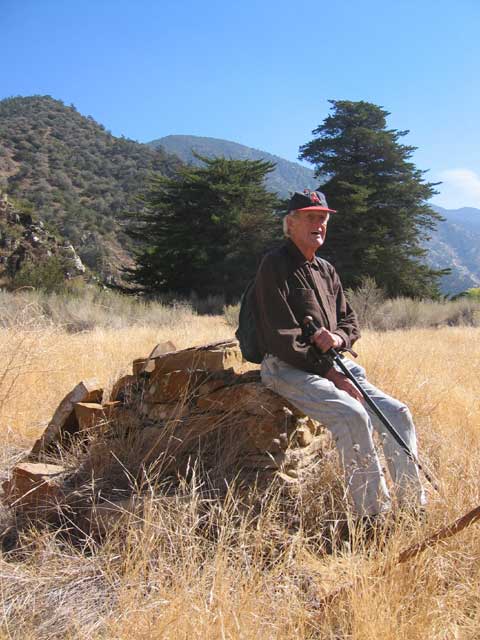
Richard rests on the ruins of the old Douglas fireplace and chimney.
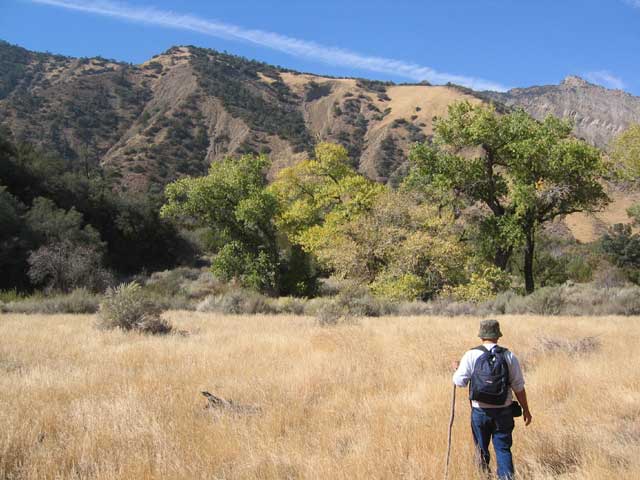
Heading north from the old Douglas Homestead.
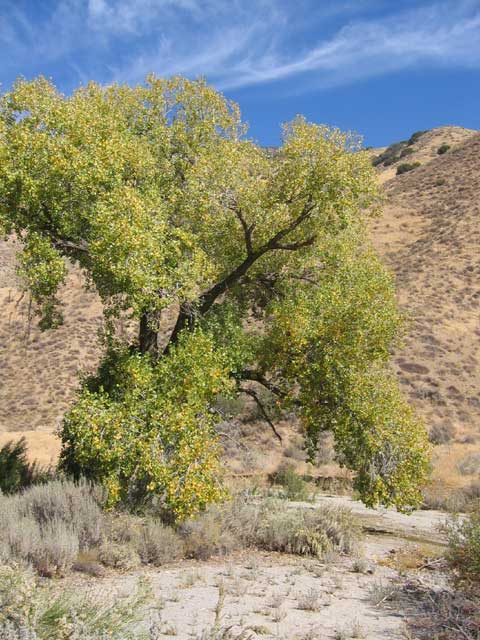
Another beautiful tree.
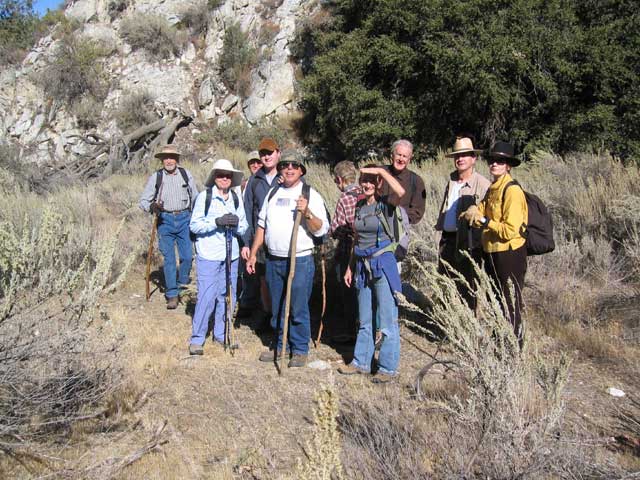
Sierra Club hikers.
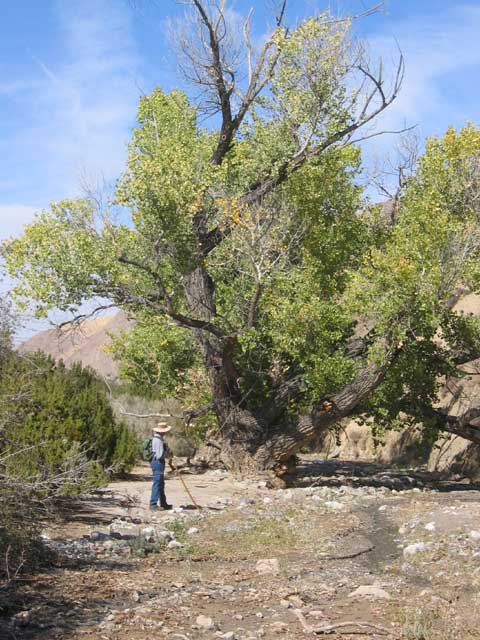
A grand old tree in a creek bed.
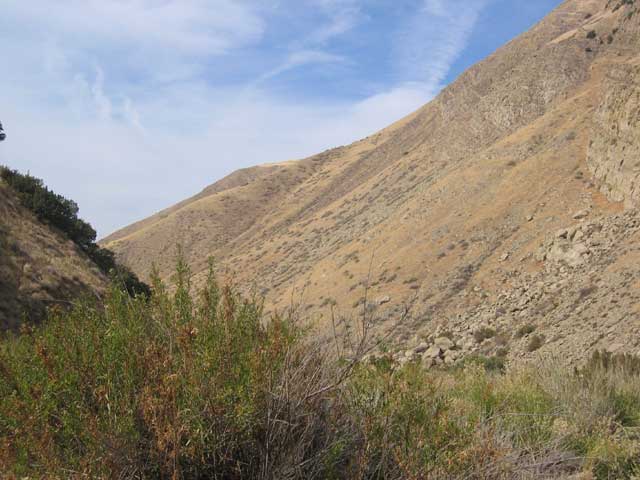
Continuing along the route of the ancient road.
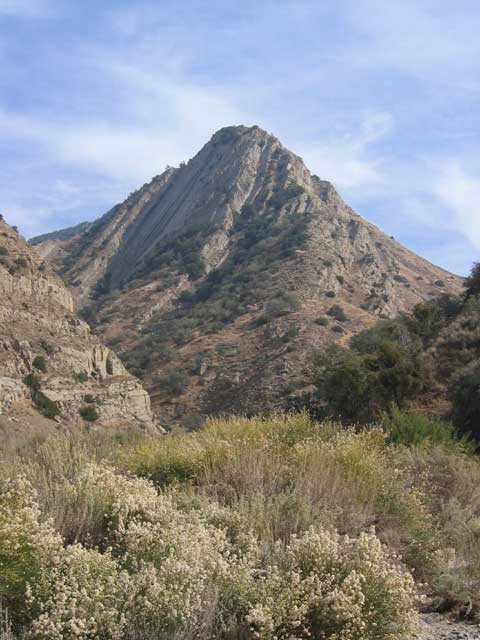
A side canyon.
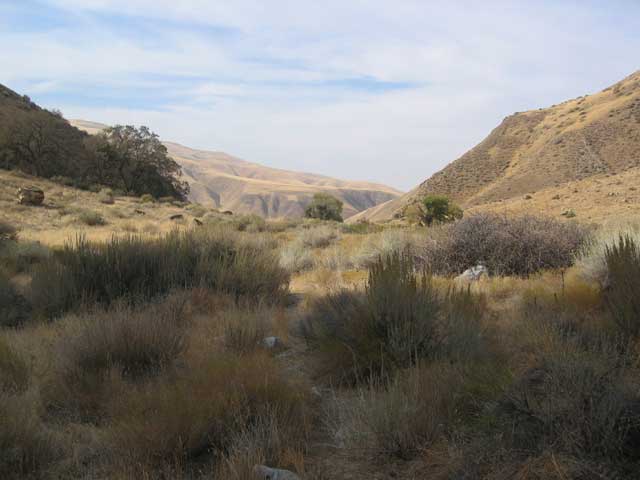
The ancient roadway would have followed this route.
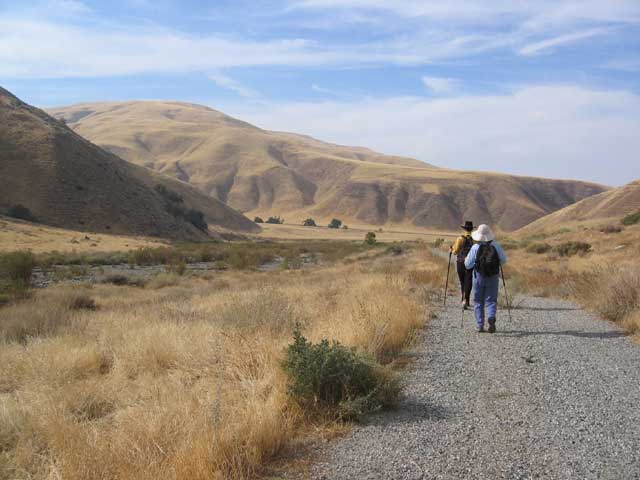
They have re-introduced Elk to Wind Wolves, but we didn't see any on this trip. We saw a mule deer and doe which I thought was an Elk (they look similar from a distance). Also saw a coyote or two, a huge tarantula as big as your hand, a small non-poisonous snake, and lots and lots of bear scat everywhere. The juniper berries were out, so this was one of the things attracting the bears at that time of year.
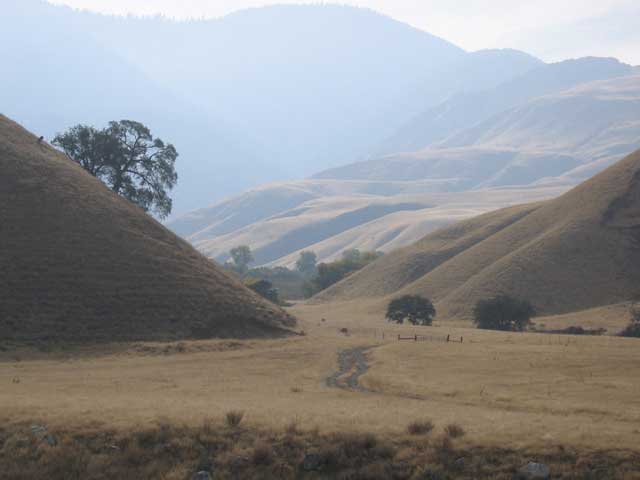
The northern foothills of the San Emigdio Mountains in the heart of the Wind Wolves Preserve. There are expansive grasslands in this area. It is not hard to see where the name Wind Wolves originates from when the winds are blowing in the long grass.
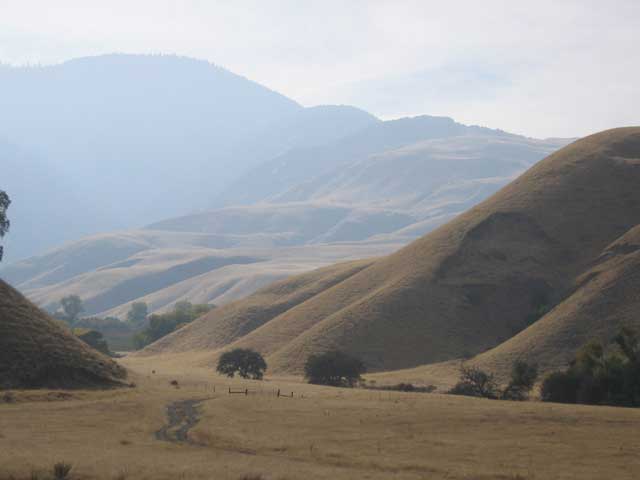
The Wind Wolves philosophy is to protect the land and leave it alone for nature to do its thing.
![]()
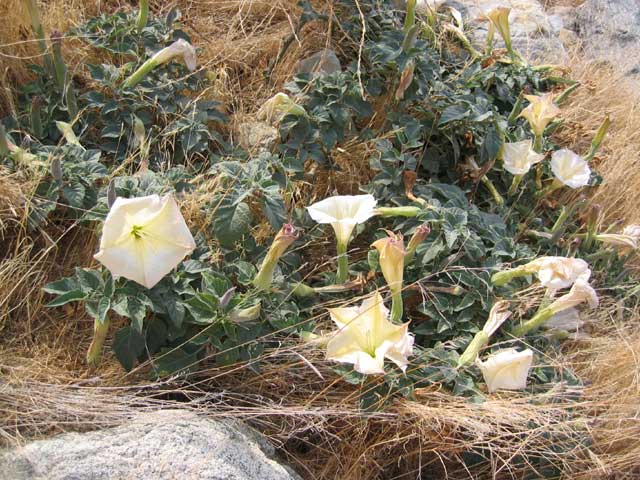
Many names have been given to this plant including: Jimson Weed, Locoweed, Angel's Trumpet, Thorn Apple, Devil's Trumpet, Mad Apple, Stink Weed, Sacred Datura,
Green Dragon, and Devil's Trumpet. Known botanically as Datura stramoniumt, it can reach a height of 5 feet, bearing white flowers and prickly seed pods that split open when ripe, usually in fall.
There are several species of the Datura genus, including Datura wrightii, commonly referred to as the Southwestern Thorn Apple. Datura stramonium is usually called Jimson Weed; Datura metaloides
is colloquially named Sacred Datura; and Datura inoxia is usually referred to as Toloache. The smaller annual, Datura discolor, is often called Moon Flower. It grows only 18 inches high and has
a purple throat not found in other species. The plant is native to Asia, but is also found in the West Indies, Canada, and the United States. Of the more than 12 species, Datura stramonium is
the most common type found in the United States (from New England to Texas and California).
The plant has been described throughout history as a toxin with hallucinogenic and euphoric effects. Jimson Weed or Datura stramonium is a member of the Potato (Solanaceae) Family, also called
the Deadly Nightshade Family. All parts of the plant are toxic. The phrases "red as a beet", "dry as a bone", "blind as a bat", and "mad as a hatter" have all been used to describe it's effects.
There are references to it in Homer's Odyssey, and Shakespeare's plays: Hamlet, Romeo and Juliet, and Anthony and Cleopatra.
Its most common name, Jimson Weed, is a contracted form of Jamestown Weed, after its use was described in 1676, in Jamestown, Virginia. This was the first record in the United States of physical
symptoms following its ingestion by British troops sent to halt Bacon's Rebellion, as noted in Beverly's "History and Present-State of Virginia."
It is one of a group of plants known as "belladonnas," thought to be named from their use by Italian women to dilate their pupils, which was considered beautiful. The plant's main ingredients
are the belladonna alkaloids atropine and scopolamine, which block the neurotransmitter acetylcholine causing its renowned side effects. Symptoms include incoherent speech, impaired coordination;
rapid heart beat; and dry, flushed or hot skin. In extreme cases, users can experience seizures, intense visual or auditory hallucinations, or cardiac arrest. Today, extracts are still used
medically in treating asthma, intestinal cramps, and also diarrhea and bed-wetting. Legally, Jimson weed is not a controlled substance. My advice, look-y no touch-y!
![]()
Peter Gray
telephone: +1 (661) 242-1234